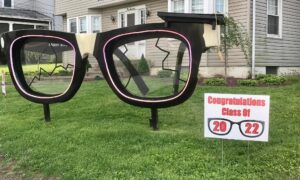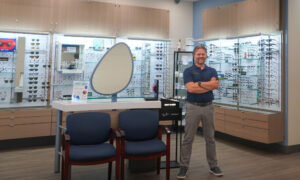
Sept. 14, 2016
You have an opportunity to diagnose and help patients control the progression of glaucoma. In the U.S., more than 120,000 are currently blind from glaucoma, accounting for 9-12 percent of all cases of blindness, according to the National Institutes of Health, and presented by the Glaucoma Research Foundation.
Here are five facts about glaucoma that you should know:
1) About 10 percent of people with glaucoma receiving proper treatment will experience vision loss.
2) Estimates are that over 3 million Americans have glaucoma. Only half of the people with glaucoma have been diagnosed.
3) African-Americans are 15 times more likely to be visually impaired from glaucoma than Caucasians.
4) Open-angle glaucoma accounts for 19 percent of blindness in African-Americans (only 6 percent in Caucasians).
5) High-risk groups for glaucoma include:
a. People over 60
b. Family members of those with glaucoma
c. Diabetics
d. People with high myopia
e. African-Americans and Hispanic-Americans
Recent research on glaucoma treatment that goes beyond traditional approaches is limited at this stage, but intriguing. Two approaches to follow are:
1) Increased omega-3 fatty acids intake (wild salmon, tuna, herring, mackerel, anchovies and sardines) may help decrease increased ocular pressure. The ratio of 3:6 omega fatty acids may be important.
2) Glaucoma and Alzheimer’s are both neurodegenerative diseases. Are they related? There is conflicting research on that question, however, the treatment for both may include neuroprotective medicine.
Take this week to review your in-office systems for glaucoma screening, diagnosis and treatment. Start the process by reading the AOA document: Optometric Practice Guideline: Care of the Patient with Open Angle Glaucoma and the International Council of Ophthalmology Guidelines for Glaucoma Eye Care then, answer these three questions:
1) Are your screening protocols effective in detecting glaucoma?
2) Is your diagnostic testing for glaucoma up-to-date?
3) Are your treatment plans for glaucoma following current protocols?
If you have the unfortunate experience of being in a glaucoma malpractice lawsuit, the two documents above (along with other documents) will be introduced during the trial and you will be asked versions of the three questions above. The best answer you can give in a malpractice lawsuit is “I followed protocol.” The worst answer you can give is “I didn’t follow protocol.” Make sure you are following established protocols for glaucoma.
While you are thinking about glaucoma, January is Glaucoma Awareness Month. Mark that on your calendar right now. Make plans in December to piggyback your marketing in January on the national glaucoma marketing. By piggybacking your marketing on national glaucoma awareness marketing you will have a higher return on your investment.
References
http://www.glaucoma.org/glaucoma/glaucoma-facts-and-stats.php
The Eye Diseases Prevalence Research Group, Arch Ophthalmol. 2004; Prevent Blindness America
The Salisbury Eye Evaluation Study, Arch Ophthalmol 2000
Racial differences in the cause-specific prevalence of blindness in east Baltimore. N Engl J Med. 1991
http://www.ncbi.nlm.nih.gov/pubmed/24290344
http://www.ncbi.nlm.nih.gov/pubmed/20166085
http://www.aoa.org/documents/CPG-9.pdf
http://www.icoph.org/downloads/ICOGlaucomaGuidelines.pdf
https://nei.nih.gov/nehep/gam/



























